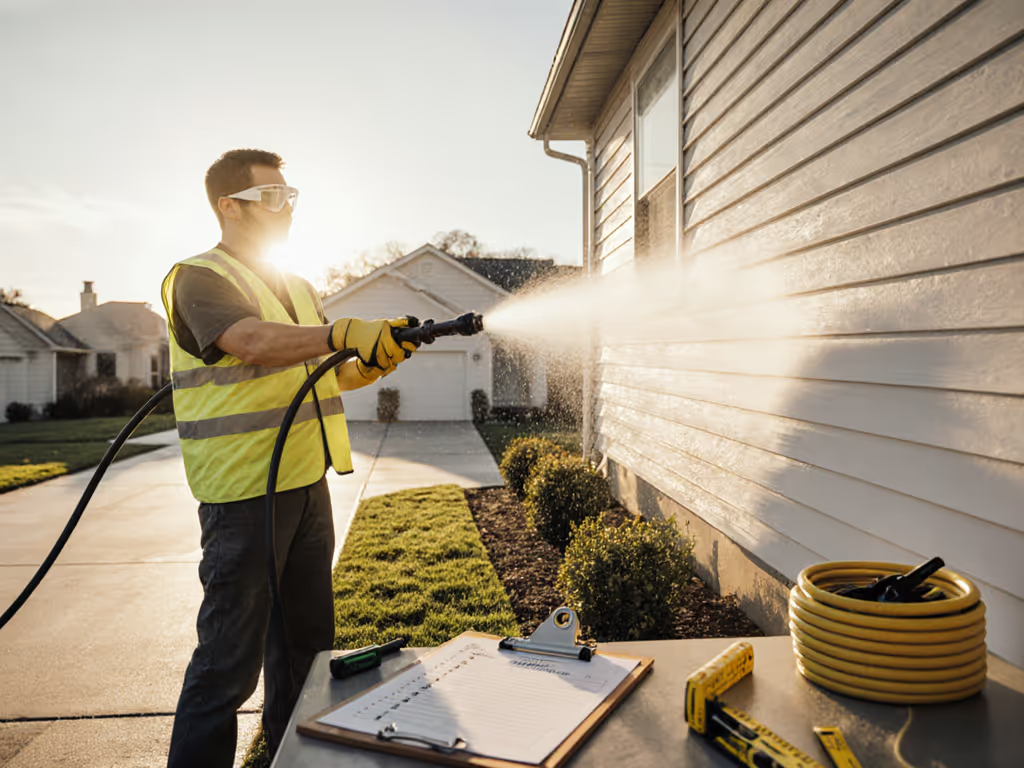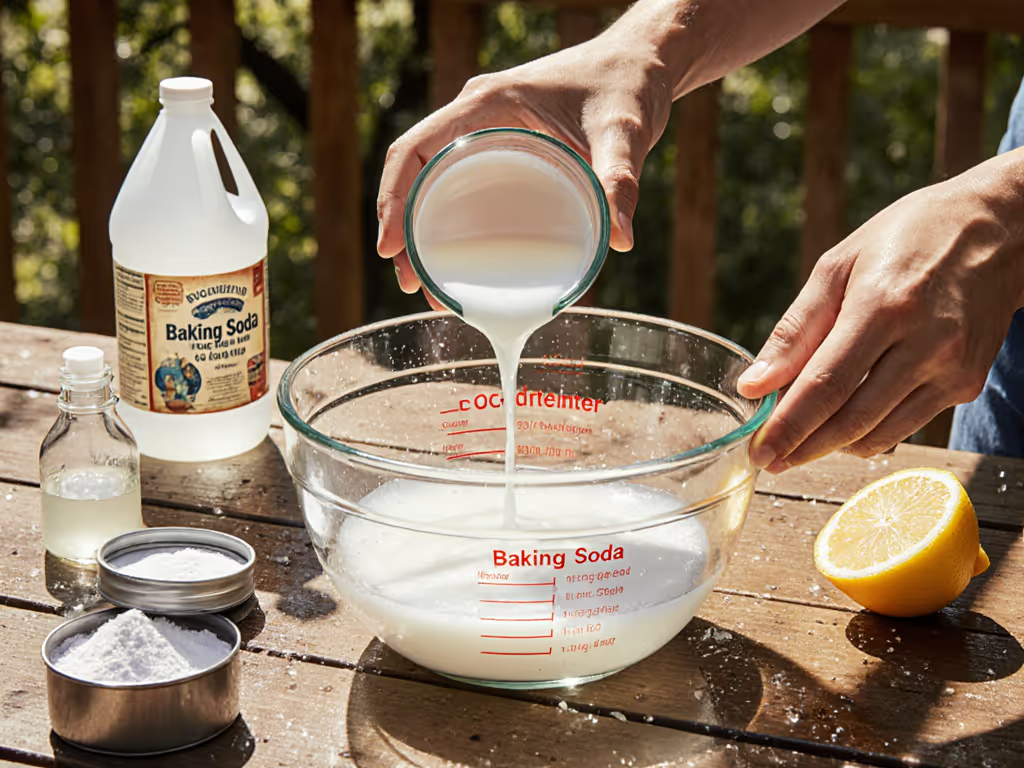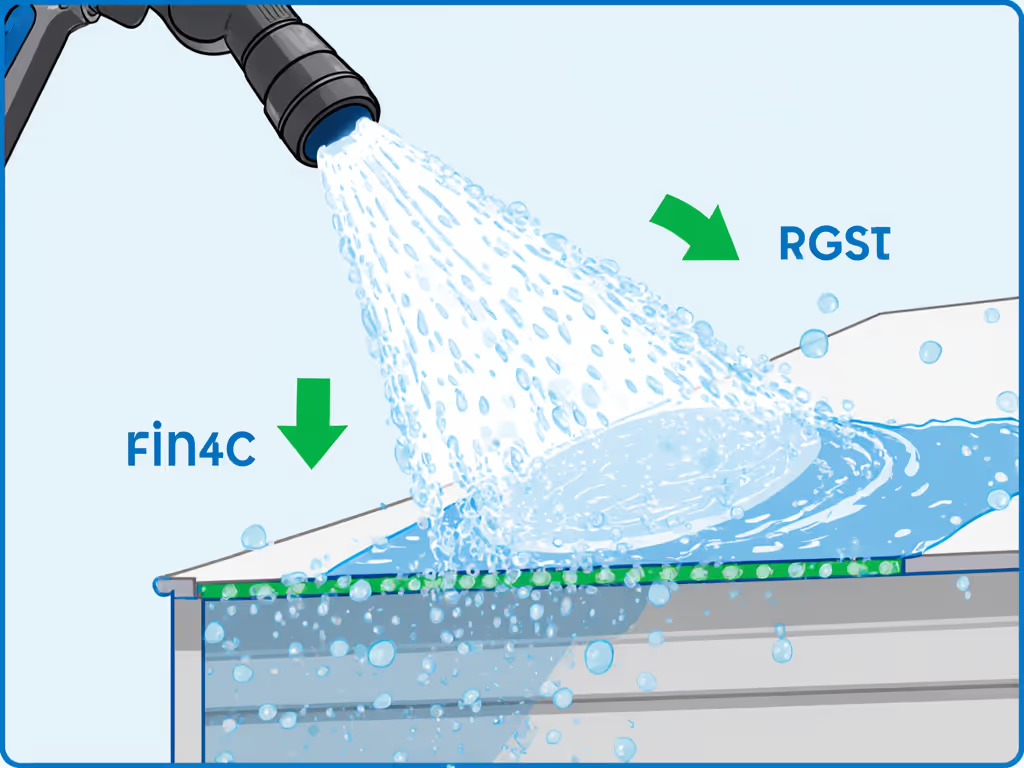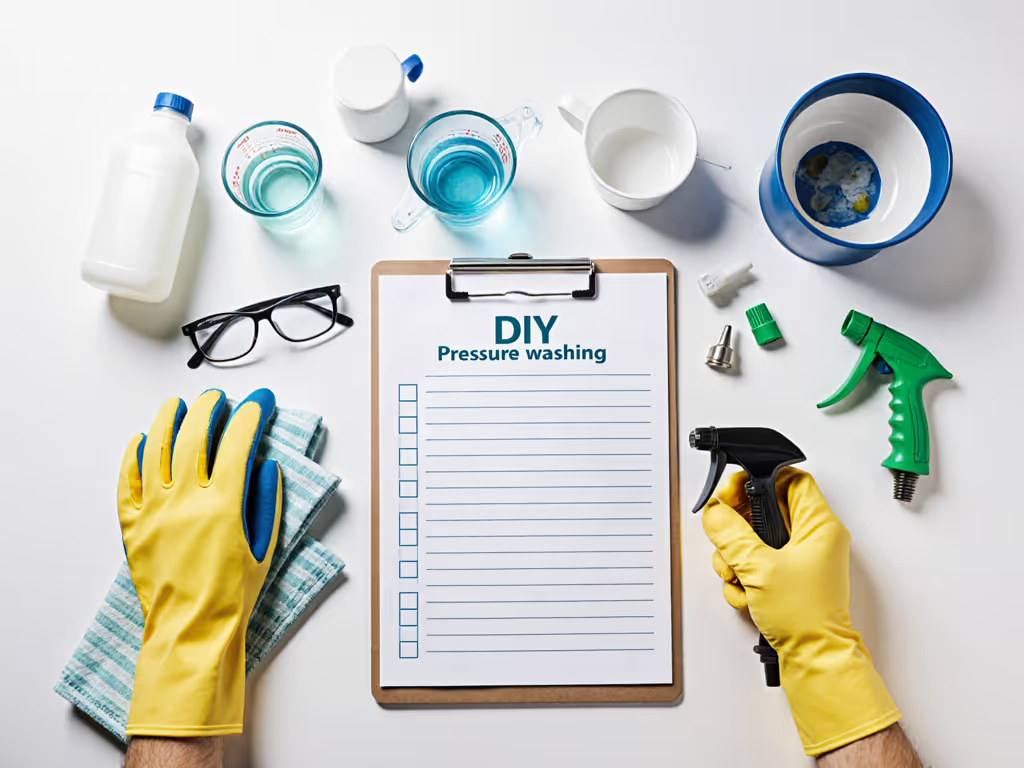If you've ever hesitated to clean your vintage deck or delicate siding because commercial detergent for pressure washing might cause damage, you're not alone. Many homeowners face this exact worry, wanting sparkling results without harming surfaces or the environment. That's where eco-friendly pressure washing solutions shine. They're not just gentler on trees and pets; they're actually safer for your surfaces when you follow a clear, repeatable sequence. I've seen too many DIYers skip critical prep steps only to etch wood grain or leave streaks, damage that could've been avoided with a simple checklist. Today, I'll share proven DIY detergent recipes designed specifically for finish-safe results, starting with conservative ratios and safety buffers every first-timer needs.
Why Your Detergent Choice Matters More Than You Think
Most pressure washing failures start before the nozzle ever touches the surface. Harsh chemicals like bleach or phosphates don't just harm ecosystems; they can also oxidize metals, fade composite decking, and even weaken mortar between bricks over time. But here's what industry reports confirm: biodegradable cleaners actually perform better on organic stains (like algae or pollen) when applied correctly. Why? They lift grime without aggressive etching, preserving your surfaces' integrity. As a rule of thumb: if it isn't repeatable, it isn't teachable or safe. That's why every recipe below includes precise dwell times and mandatory test patches.
The Critical Pre-Work Checklist (Don't Skip This!)
Before mixing any solution, run this 3-step safety sequence. It's the same checklist I tape to handles for nervous new users:
- Pre-rinse with low pressure: Use a 40° nozzle at 500 PSI to loosen surface debris. Never blast dry dirt (it scratches like sandpaper).
- Test patch in hidden area: Apply detergent to a 6x6 inch section (e.g., behind a downspout). Wait 5 minutes. Check for discoloration or texture changes.
- Verify runoff path: Ensure soapy water drains away from gardens/pets. Concrete driveways? Channel runoff toward grass (natural filter) per EPA wastewater guidelines. For comprehensive PPE and eco-safe runoff best practices, see our pressure washing safety guide.
Pause and inspect every panel before proceeding. One skipped test patch sank a contractor's reputation, and I won't let it happen to you.
Four Finish-Safe DIY Detergent Recipes (Tested for Common Surfaces)
All recipes use grocery-store ingredients. Always mix in this order: water → dry powders → liquids. Never combine vinegar and baking soda directly (they'll fizz and lose potency)!
🌿 All-Purpose Vinegar Solution (Best for Vinyl Siding & Patios)
Why it works: White vinegar's acetic acid dissolves mineral deposits without bleaching colors. Ideal for oxidized surfaces where harsh detergents cause streaking.
- 1 gallon warm water (helps dissolution)
- 1½ cups white vinegar
- ¼ cup liquid castile soap (not dish soap; it strips sealants)
Application sequence:
- Apply with 65° tip at 500 PSI (no concentrated streams!)
- Dwell 3-5 minutes max (set a timer)
- Walk speed: Slow, even passes (3 ft/sec) with 50% overlap between strokes
- Rinse-to-sheen: Switch to 40° nozzle. Rinse until water sheets evenly (no beading).
🌱 Citric Acid Cleaner (Safest for Cedar & Softwoods)
Why it works: Citric acid lifts tannin stains without raising grain. Critical for pressure washing new cedar fences (vinegar's pH can darken wood).
- 1 gallon warm water
- ¾ cup citric acid powder (from canning aisle)
- 2 tbsp glycerin (prevents rapid drying)
Critical modifications for wood:
- Dwell time: 2 minutes MAX (citric acid works fast on organics)
- Nozzle: 75° tip only (gentlest spray pattern)
- Overlap: Increase to 60% to prevent striping
🚗 Car Wash Formula (Guaranteed Paint-Safe)
Why it works: Castile soap + citric acid lifts bugs/tar without stripping wax. Vinegar solutions risk dulling clear coats (avoid them on vehicles).
- 1 gallon water
- 1 cup liquid car wash soap
- ½ cup citric acid solution (dissolve ¼ cup powder in 1 cup warm water first)
Pro tip: Spray horizontally on vertical surfaces. Gravity causes streaks when spraying upward!
🏡 Heavy-Duty Biodegradable Degreaser (Driveways Only)
Why it works: Borax cuts oil without chlorine's concrete-etching risk. Never use on stone or pavers (citric acid is safer there).
- 2 gallons water
- 1 cup borax
- 1 cup washing soda (not baking soda; it's too weak)
- ½ cup castile soap
Warning: Borax requires thorough rinsing. After cleaning, do a second pre-rinse pass to prevent residue.
The Rinse-Off Sequence That Prevents 90% of DIY Disasters
Most "eco-friendly" guides stop at detergent application, but improper rinsing causes more damage than the cleaning phase! Follow this pressure washing finish sequence:
- Flush detergent tank: Run clear water through system for 2 minutes to prevent clogs.
- Switch to 40° nozzle: Higher pressure displaces grime deeper in pores.
- Top-down rinsing: Start at roofline, work downward. Never spray upward from ground level (it forces water under siding).
- Pause and inspect every panel: Look for lingering suds or dark spots. Re-rinse immediately if found.
- Final walk speed test: Spray a wet surface. If water beads up, you missed residue, then reapply.
When to Call a Professional (Protecting Your Investment)
These recipes work for maintenance cleaning, but skip DIY if you see:
- Black mold penetrating >1/8" deep (requires commercial enzyme treatment)
- Paint peeling or wood rot (pressure washing worsens structural issues)
- Surfaces near electrical meters or gas lines
Professionals handle these with containment systems and regulated biodegradable cleaners you can't buy retail. Your safety isn't worth risking for a $5 detergent.
Your Action Plan: Start Small, Build Confidence
- Tonight: Print the pre-work checklist (photo below) and tape it inside your detergent cabinet.
- Tomorrow: Test the vinegar solution on your least visible fence panel. Time the dwell precisely.
- Weekend: Clean one small area (e.g., 4x4 ft patio section) using the 50% overlap rule. Record results.
Eco-friendly pressure washing isn't just about ingredients, it's about sequence. By starting conservatively and inspecting every step, you'll avoid the costly rework that turns weekend projects into nightmares. Remember that teen who mastered fence cleaning with a taped-to-the-handle checklist? He's now prepping to start his own pressure washing business. Clarity and sequence prevent damage and deliver confidence, one repeatable pass at a time.
Pause and inspect every panel before moving to the next section. Your future self will thank you when the job lasts years, not months.




